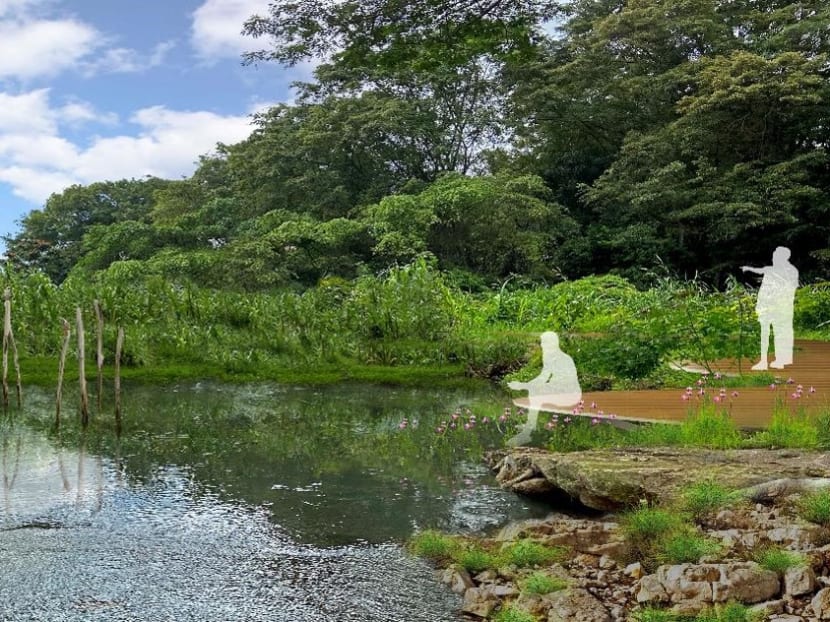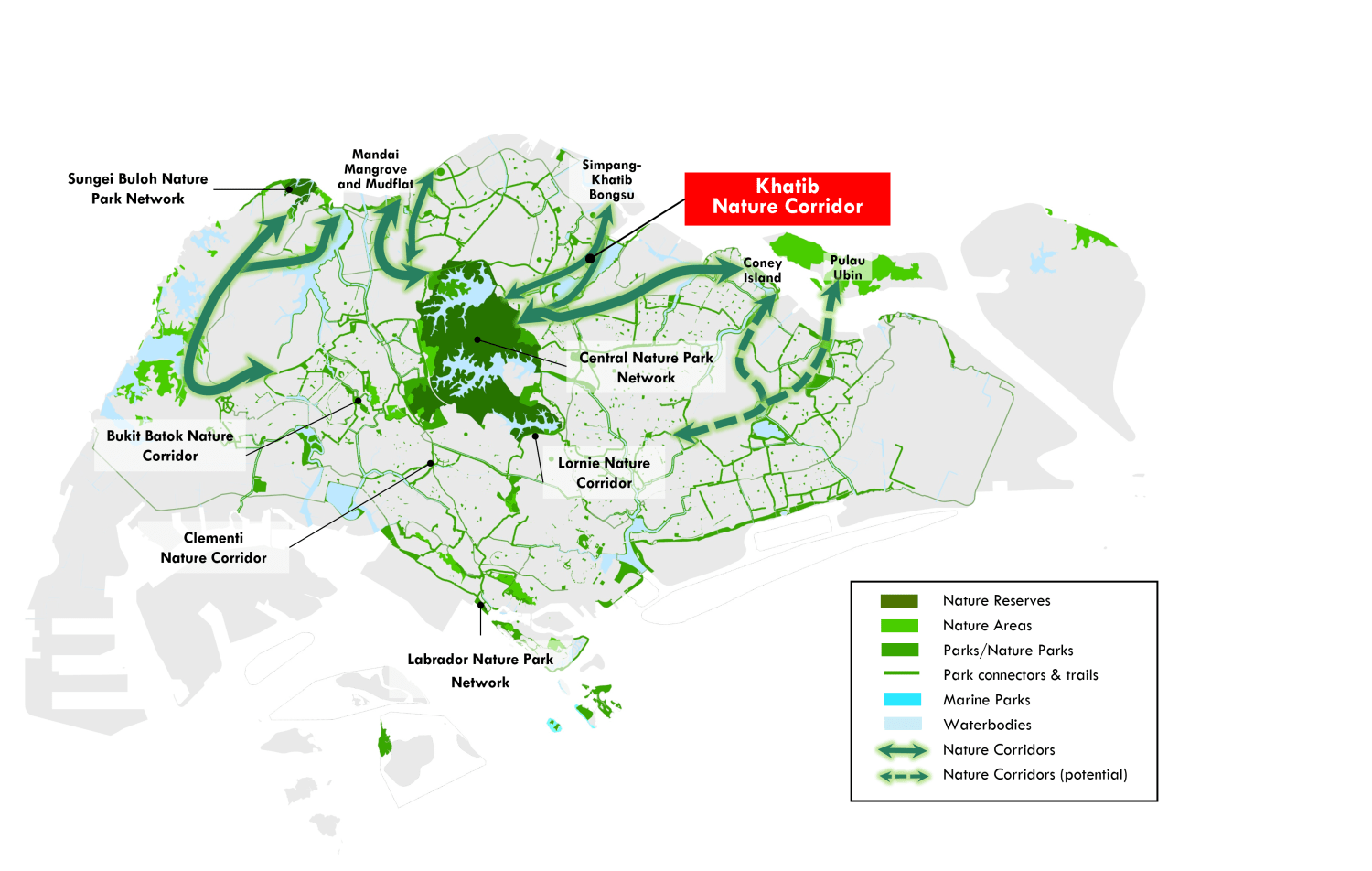New Khatib Nature Corridor to comprise 3 new parks, add more than 90ha of green space
SINGAPORE — A new Khatib Nature Corridor with five parks, including three new ones, will be established in the coming years and add more than 90 hectares of green spaces to the nation’s landscape.

An artist's impression of Miltonia Nature Park.
- The Government will be establishing a new Khatib Nature Corridor
- It has five parks, including three new ones, covering 90 hectares
- The corridor will run along forested sites at Springleaf, Tagore, Miltonia Close, among others
- It will also be connected to three recreational routes, which link to other parts of Singapore
SINGAPORE — A new Khatib Nature Corridor with five parks, including three new ones, will be established in the coming years and add more than 90 hectares of green spaces to the nation’s landscape.
The addition is equivalent to the size of the Jurong Lake Gardens.
The new ecological corridor was identified along with three others in northern, northwestern and northeastern Singapore — Kranji, Lim Chu Kang and Seletar — after the National Parks Board (NParks) conducted an ecological profiling exercise across the island.
The exercise is meant to guide urban planners as they carry out long-term planning of Singapore’s land usage.
The plans for Khatib Nature Corridor, unveiled by the Urban Redevelopment Authority (URA) on Monday (June 6) as part of its long-term plan review for what Singapore could look like over the next 50 years, will be exhibited to the public at The URA Centre.
The new ecological corridor will comprise forested sites at Springleaf, Tagore, Miltonia Close and along Lower Seletar Reservoir, as well as the existing Springleaf Nature Park.
The five parks within the nature corridor include the previously announced 40ha Khatib Bongsu Nature Park, which is slated to be ready by 2026, and the 4.8ha Canberra Park.
The three new ones are:
- Nee Soon Nature Park, which will have a rare freshwater swamp rest habitat
- Miltonia Nature Park, which will be a “stepping-stone habitat” between the Central Catchment Nature Reserve and Khatib Bongsu Nature Park
- Extension of Lower Seletar Reservoir Park, to be completed in tandem with the redevelopment of Orchid Country Club which will be returned to the State after 2030
NParks has worked with URA and the Housing and Development Board (HDB) to safeguard land as nature parks, given that upcoming residential and mixed-use developments at Springleaf and Miltonia Close lie within the ecological corridor.
Residential areas within the Springleaf site are planned for private housing, a URA spokesperson said.
Speaking at the launch of the public exhibition on Monday, National Development Minister Desmond Lee said that the authorities will take an ecologically sensitive approach towards the master planning for the Springleaf area based on the findings of NParks' ecological profiling exercise.
"We are working with ecologists and landscape architects to calibrate our designs and phase the developments, in order to maintain ecological resilience and minimise habitat loss," he added.
Khatib Nature Corridor will also be connected to three recreational routes — the Round-Island Route, Coast-to-Coast Northern Trail and the Central Corridor — which link to other parts of Singapore.
More than 20km of new trails will be added, bringing a total of 150ha of parks and nature parks as well as 80km of curated trails for Khatib Nature Corridor.
As for the potential ecological corridors at Kranji, Lim Chu Kang and Seletar, more information will be released in due course.

NParks also said that subject to future planning for the redevelopment of Paya Lebar Air Base, another ecological corridor in the eastern region could be identified.
The airbase is set to be relocated from the 2030s onwards.
Aside from that, NParks has completed an ecological profiling exercise for the coastal and marine environment. It identified and assessed core habitats such as coastal forests, mangroves, intertidal flats and coral reefs.
The exercise showed that Singapore’s marine ecosystems are generally self-sustaining.
Based on the findings, NParks will work with agencies to study how developments can be sensitively done, taking into account the various coastal and marine habitats.
NParks will also explore how enhancing and restoring habitats can improve coastal and marine life.








